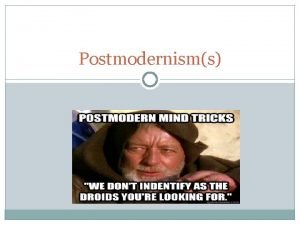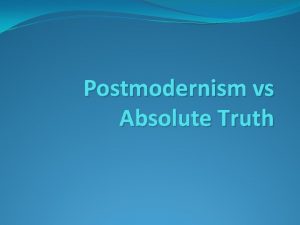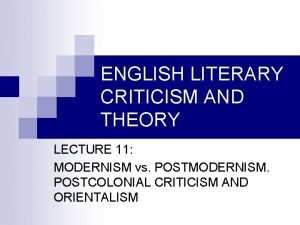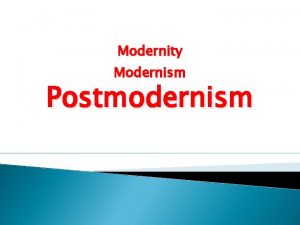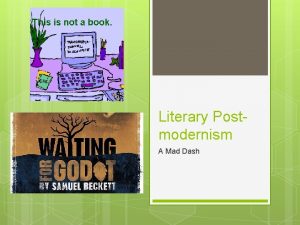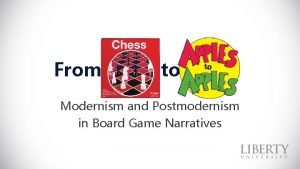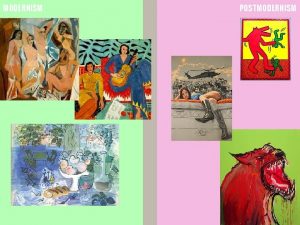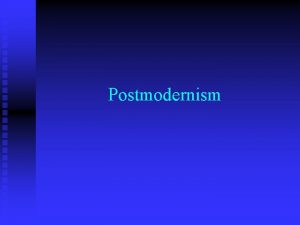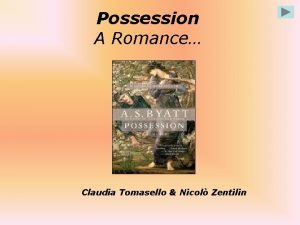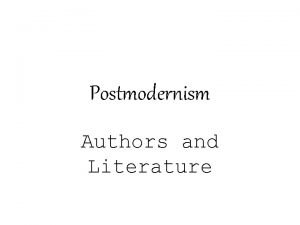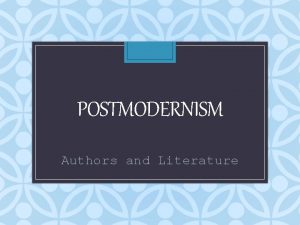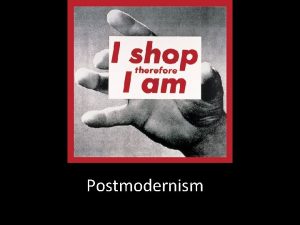Modernism and Postmodernism Nicol Zentilin Postmodernism is hard







- Slides: 7

Modernism and Postmodernism Nicolò Zentilin

Postmodernism • is hard to define, it is a complicated term. • is a concept that apperas in a wide variety of discipliners or areas of study. • is difficult to be located temporally or historically. • to start thinking about postmodernism is easier to think about modernism. • there is nothing above us: there is no trascendent reality. • people are finite and limited in a particular space and time. • there is no way to have access to objective truth. • there is no possibility to really know anything. • society is based on pluralism and it is full of prejudices. • the concept of character is a myth, an illusion created to reinforce the ideology of capitalism.

Modernism • is the movement from which postmodernism seems to emerge. • lasted from 1900 to 1930. • is away from the apparent objectivity provided by omiscient third person narrator. • has rejected the need of god’s existence. • belives in some universal ethical standards. • reason is sufficient to understand the nature of life and man. • Poetry seems more documentary and prose seems more poetic.

Sameness between modernism and postmodernism • Rejecting boundaries between high and low form of art: culture is only one. • Rejecting rigid genre distinctions. • Reflexivity and self consciousness.

Differences between modernism and postmodernism Postmodernism: • reason can not lead through knowledge and truth. • knowledge is interpreted as a kind of colonialism to attack other people. • it celebrates the idea of fragmentation, incoherence, chaos and disorder. Modernism: • reason is sufficient to know the truth. • knowledge is important to be knowledgeable in general and to become an educated person. • it celebrates the idea of unity, coherence, rationality and order out of chaos.

Modernism and Modernity • Modernism generally refers to the broad aesthetic movements of the twentieth century. • Modernity refers to a set of philosophycal, political and ethical ideas which provide the basic for the aesthetic aspect of modernism. “Modernity” is older than “modernism”.

The basic ideas of the Enlightenment • The basic ideas of Enlightment are similar to the ones of Modernism. • There is a stable knowable self that is conscious, rational and autonomous. • Reason is the highest form of mental functioning. • The mode of knowing produced by the objective rational self is science. • The knowledge produced by science is truth and is eternal. • All human istitutions and practices can be analyzed by science. • Reason is the ultimate judge of what is true. • In a world governed by reason the true will always be the same as the good and right. • Language must be rational and trasparent.
